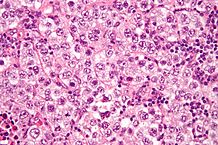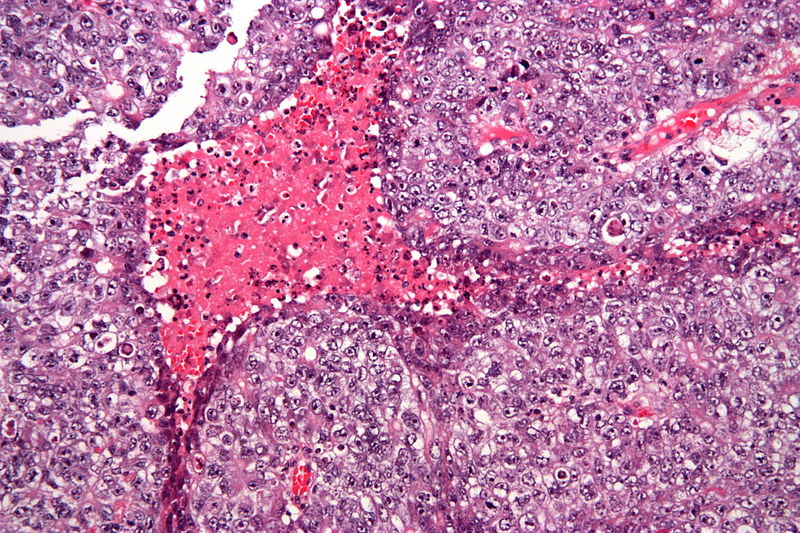Ovarian germ cell tumor pathophysiology
|
Ovarian germ cell tumor Microchapters |
|
Diagnosis |
|---|
|
Treatment |
|
Case Studies |
|
Ovarian germ cell tumor pathophysiology On the Web |
|
American Roentgen Ray Society Images of Ovarian germ cell tumor pathophysiology |
|
Risk calculators and risk factors for Ovarian germ cell tumor pathophysiology |
Editor-In-Chief: C. Michael Gibson, M.S., M.D. [1]Associate Editor(s)-in-Chief: Monalisa Dmello, M.B,B.S., M.D. [2]
Overveiw
Gross Patholgy
| Ovarian germ cell tumor subtype | Features on Gross Pathology |
| Dysgerminoma |
|
| Endodermal sinus tumor or yolk sac tumors |
|
| Embryonal Carcinoma |
|
| Teratoma |
Teratoma-mature
Teratoma-immature
|
Microscopic Pathology
| Ovarian germ cell tumor subtype | Features on Histopathological Microscopic Analysis | Image |
| Dysgerminomas |
|
 |
| Endodermal sinus tumor or yolk sac tumors |
|

|
| Embryonal carcinoma |
Main features:[1]
Other features:
|
 |
| Teratoma |
Mature teratoma
|
 |
References
- ↑ 1.0 1.1 Abbas, Fausto, Mitchell (2010). Basic Pathology. Elsevier. pp. 696–697. ISBN 978-81-312-1036-9.